It’s book review day—and I do mean DAY, as this month I’m experimenting with putting all of my monthly reviews into one post. It’s a LOT of reviews, so I’ll forgo the further intro and get right to the books.
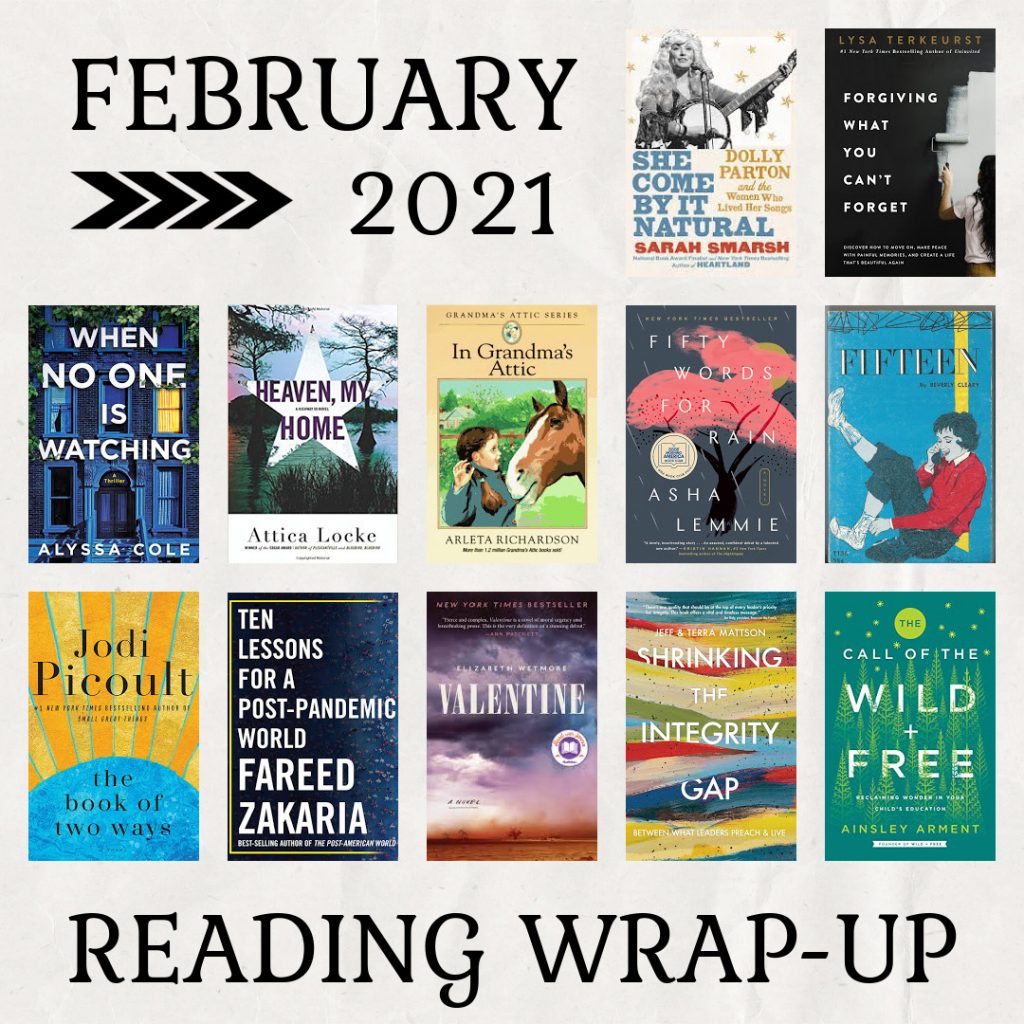
Call of the Wild + Free: Reclaiming Wonder in Your Child’s Education, by Ainsley Arment ~ Ainsley Arment never set out to homeschool her kids, but after starting her oldest on a traditional schooling path, she quickly realized that a “normal” education plan was not in the best interest of her children or herself as their mom. She chose to bring her son home and is now a homeschooling mom of five and the founder of Wild + Free, a community of families who desire to educate their children “by challenging their intellectual abilities and nurturing their sense of curiosity, joy and awe—the essence of a positive childhood.”
In Call of the Wild + Free, Arment outlines the mission of homeschooling (reclaiming childhood and rekindling a love of learning); dispels many myths surrounding homeschooling (addressing concerns about socialization, college preparation, and parental qualification); provides a deep-dive into the various homeschooling models (with background information about several homeschool pioneers); and details her own method of schooling the Wild + Free way (which is based on the five core tenants of nature, story, play, curiosity, and wonder).
As a family who is already committed to homeschooling, I don’t know that I was the intended reader for this book: I didn’t need to read more persuasive arguments for choosing to homeschool, and I’ve already worked through the various common concerns that Arment spends many chapters addressing. However, I certainly appreciated the stories and statistics that affirmed our schooling choices, and Arment provided me with some helpful responses for those who might voice their objections to our own family’s decisions.
I had a few qualms with the book’s tone: Arment is very passionate about homeschooling, and though I love her enthusiasm, I can imagine her defensiveness might come across as condescending or judgmental towards those who have not chosen to teach their children at home. Arment encourages mamas to stop conceding to societal pressure to embrace public schooling, while at the same time Arment herself is asserting that homeschooling is almost always in a family’s best interest. . . a message that undermine’s each individual parent’s discernment and neglects to acknowledge that schooling choices are deeply personal and variable. This also comes across when discussing specific school models: Arment claims to have no bias related to specific homeschooling methods, but is quite confident about the superiority of her own unique model (largely rooted in Charlotte Mason principles), making it difficult for me to take her “you do you” message seriously.
All that said, I am so glad to have read this. My favorite section of the book is Arment’s detailed explanations of the various homeschooling models, from Classical to Unschooling and everything in between. Since we are just starting off on our homeschooling journey, it was helpful to learn about the distinctions between these models so that I can make informed decisions about which might work best for us. I enjoyed reading about the specifics of the Wild + Free model, and while Arment’s methods are not entirely in line with my own pedagogical perspectives, she describes a number of strategies that I’d love to begin building into our own homeschool. Her emphasis on outdoor time, less structured education, and a reliance on living stories are all particularly intriguing: all are methods that would likely work well for us and that I needed some encouragement in pursuing.
If you are questioning whether or not homeschooling will be a good fit for your family, this book might be a good place to start as you think about if and how to teach your children at home. Keep in mind, though, that there is no one-size-fits-all approach to homeschooling, and this is just one homeschooling mom’s perspective (albeit one I personally enjoyed reading about). I came away from this book more enthusiastic than ever about our decision to homeschool, and eager to incorporate some new tools and approaches into my school days with my kids. The book fit well with my decision to seek wonder in 2021—for myself, and for my family too!
My Rating: 4 Stars.
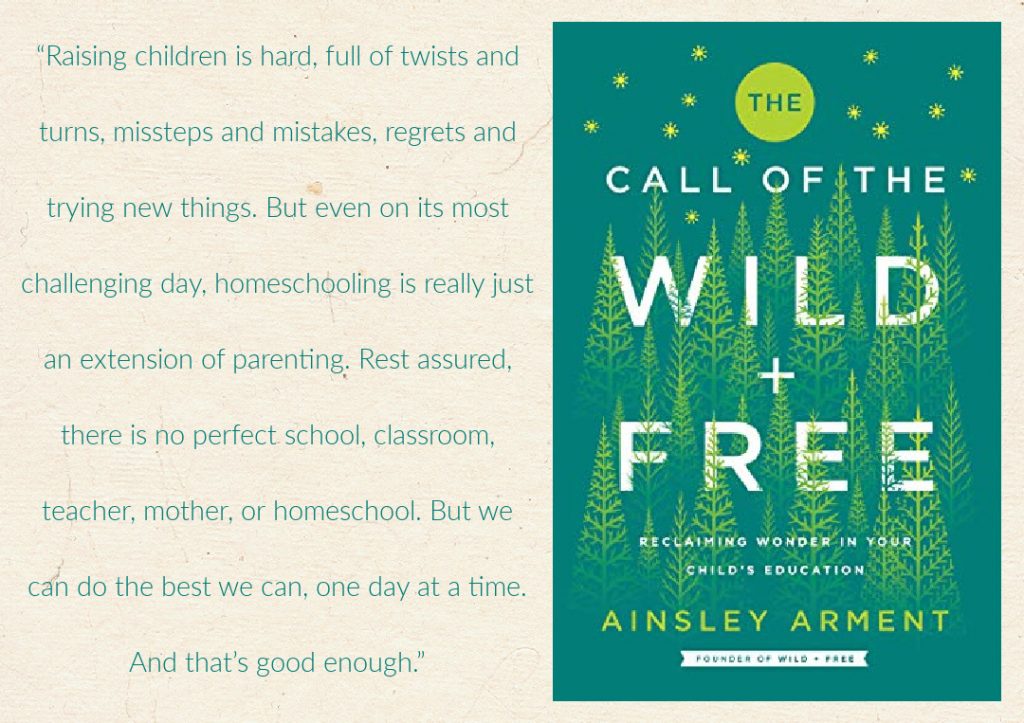
Fifteen, by Beverly Cleary ~ The first week of January was a rough one, and left me craving as much slowness and nostalgia as possible. A perusal of our bookshelves led me to pick up my first-edition copy of this 1956 classic from beloved children’s author Beverly Cleary (who, I have since discovered, was born in 1916 and is still alive!). This is the story of fifteen-year-old Jane, who spends her days babysitting and also pining after boys. Her fantasy of meeting a dreamy new boy comes true one day during a babysitting job, when Stan Crandall shows up at the door for a dog food delivery. This charming meet-cute soon develops into a sweet courtship, but Jane’s insecurities and a number of comical mishaps seem destined to keep this happy teen couple apart.
This book satisfied my every desire for a return to innocence in my reading life. The act of reading this older book—with its sweet illustrations and fraying clothbound cover—was itself a genuine treat, and the wholesome story is a delightful throwback to a less complicated time; descriptions of quaint diners and 50s fashion and parent-supervised phone conversations were just what I wanted to be reading about when our modern world felt shaky.
This is very much a book of its time. There are some aspects of the novel that don’t hold up (there are some clear instances of sexual harassment that go unaddressed, as well as a few terms/slurs that are not at all okay by today’s standards), but the story and characters are all superb, and just as engaging today today as I have no doubt they were in the 1950s. I was especially surprised and impressed with Cleary’s ability to capture the universal adolescent experiences of insecurity and struggling to fit in: Jane’s introspection and self-discovery is mature, but also typical of any 15-year-old, and in so many ways her internal struggles are exactly the same as those faced by today’s teen girls.
YA literature has changed a lot in the decades since Fifteen was published, and while the caliber of writing and the complexity of subject matter in today’s books has arguably improved, it’s hard to beat the heartwarming storytelling and straightforward morals of Beverly Cleary’s books. Fifteen is a classic that mostly stands the test of time—something I’m not sure can be said about most of what is being written for teens today.
My Rating: 4.5 Stars. (Rounded up to 5 Stars on Goodreads.)
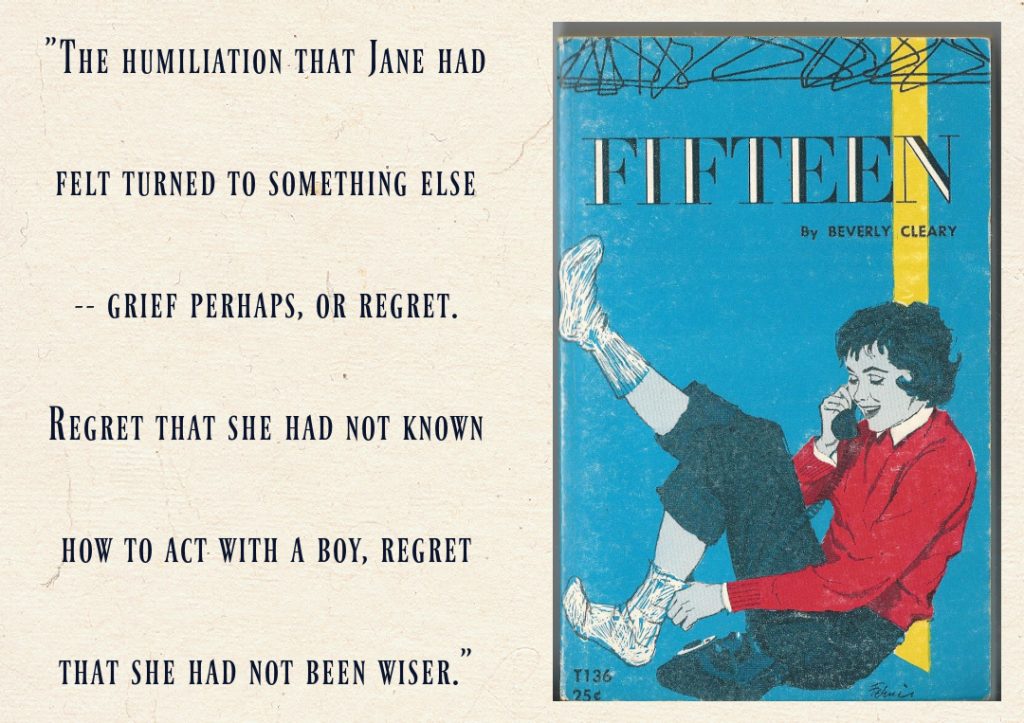
When No One Is Watching, by Alyssa Cole ~ Sydney Green was born and raised in Brooklyn. Now in her thirties and recently divorced, Sydney has returned to the brownstone where she grew up and is grieved by the changes that have occurred in her beloved childhood home. Frustrated by the cultural casualties of the neighborhood’s gentrification, Sydney throws herself into a deep-dive of Black history. She is assisted by Theo, her white neighbor who recently moved into Sydney’s neighborhood with his (now-ex) girlfriend. Together, Leo and Sydney uncover something sinister beneath the seemingly innocent neighborhood changes, and it soon becomes clear that more than just their homes that are at stake; their very lives are on the line.
This book is a unique mashup of genres (issues-driven contemporary fiction, romance, and thriller) that might have worked well together, had the book not been so disjointed: the novel leads off with the issues, then morphs into romance, with the suspense all jammed into the final few chapters. I wanted more from some of these components (namely, more thriller) and less of others (the romance was too predictable and too open-door for me). I found the black history fascinating and appreciated the face that Alyssa Cole gives to a common yet little-understood phenomenon of gentrification. Unfortunately, Cole’s presentation of systemic racism and other race-related issues feels lifted out of a textbook rather than based in true experience, and I grew increasingly frustrated by the racial stereotypes and caricatures of the white antagonists, and the exploitation of issues for the sake of the (over-the-top) story.
Sydney and Theo both have tortured pasts, and their backstories are a highlight of this book. Cole might have developed a more polished and memorable novel if she had made it more character-driven and let the mystery and moralizing serve as background rather than the main event.
My Rating: 2.5 Stars. (Rounded up to 3 stars on Goodreads.)
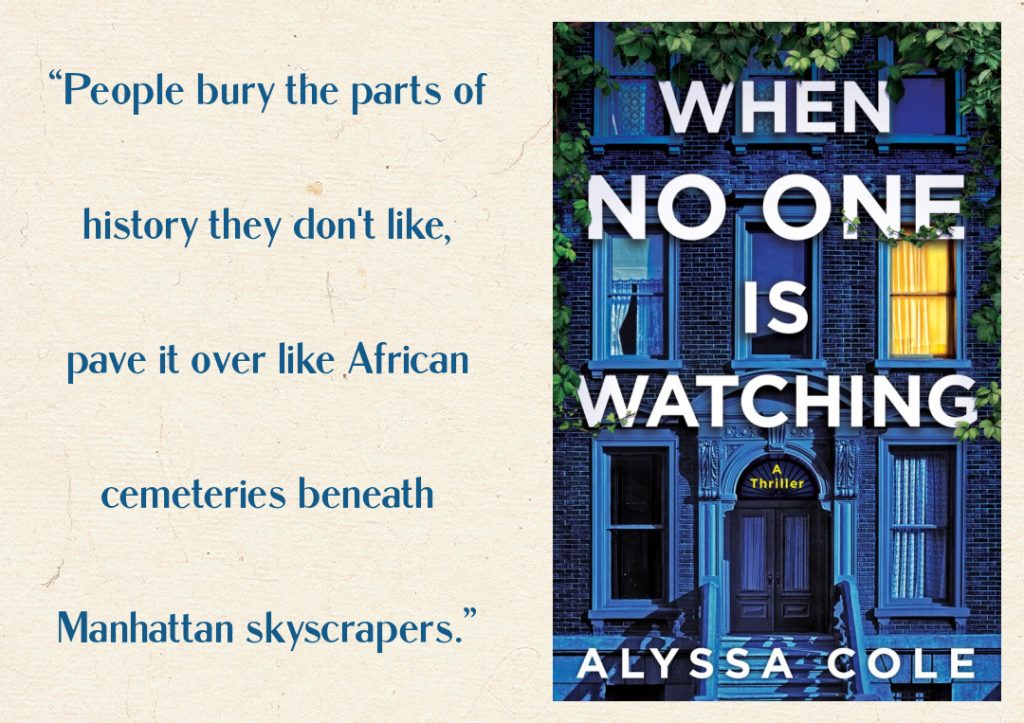
Fifty Words for Rain, by Asha Lemmie ~ In 1948, Nori is an eight-year-old girl living in the attic of her grandparents’ estate in Kyoto, Japan. The illegitimate daughter of a married Japanese aristocrat and her African American GI lover, Nori’s dark skin and disreputable parentage leave her grandparents desperate to conceal her existence, and Nori has responded with compliance and resignation to her solitary confinement. Nori’s world begins to open up when her older half-brother, a prodigious musician, moves to the estate and the two form an immediate bond. But circumstances soon tear the siblings apart, and the next two decades are filled with tragedy, heartache, a growing awareness of the world’s cruelties, and a perpetual loss of innocence for young Nori.
This sweeping historical story is beautifully told, yet heartbreaking. The book offers a unique window into a culture and time—the years following WWII in Japan—that I haven’t read much about, interlacing universal themes of family, belonging, and resilience with more specific messages about racism, class, and societal norms. Nori is an intriguing protagonist with a story that comes to life through the perspectives of a handful of observers—witnesses whose own stories are also remarkable and each worthy of their own novels.
While some reviewers have described this book as “tragedy porn”, I found the story believable and moving, albeit very emotionally intense. I listened to this on audio, a format that I usually struggle to follow for historical fiction, but this book is very well done and made for engaging listening.
My Rating: 4 Stars.
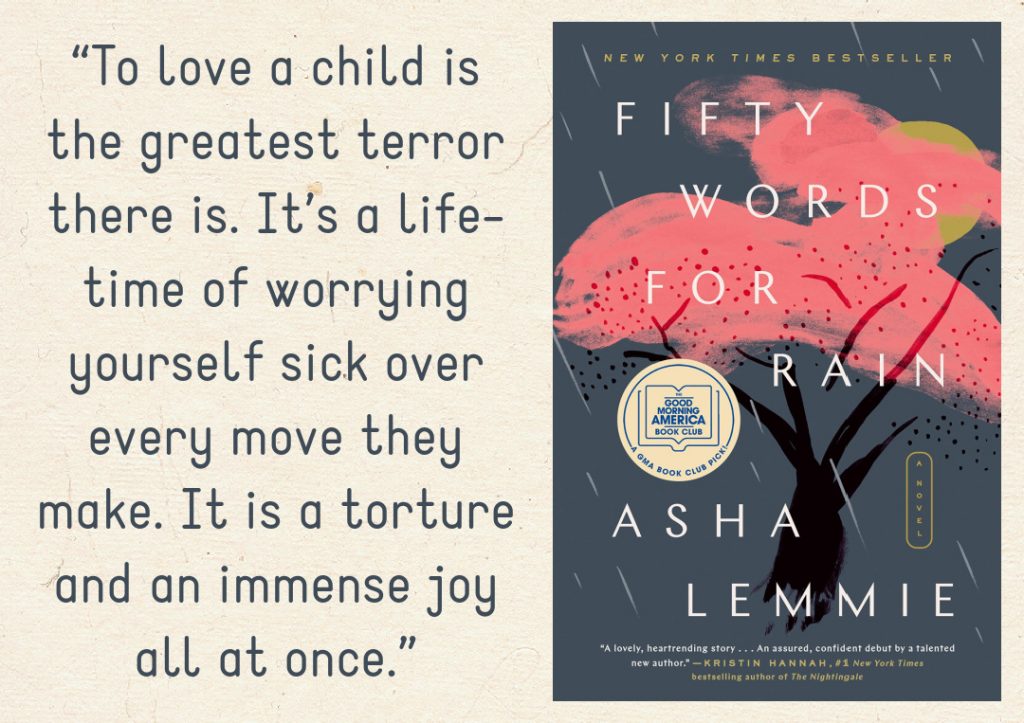
Heaven, My Home, by Attica Locke ~ In this follow up to Bluebird, Bluebird, Darren Matthews is a black Texas Ranger whose marriage, career, and reputation are all in a precarious state following the events of a previous investigation. Hope comes in the form of a new case: a 9-year-old boy has gone missing from his lakeside home in East Texas, and Darren is sent in to gather information on a crime that appears to be connected to the white supremacists who dominate the town. Darren’s findings could lead to his own exoneration, but as new layers of motives, secrets, and historical ties are uncovered, it becomes clear that much more than the lives of Darren and the missing boy are in jeopardy.
The previous book in this series was one of my favorite books of 2018, so I was disappointed not to love this follow-up just as much. One of the aspects I appreciated most in Bluebird, Bluebird was Locke’s infusion of political themes that enhanced the story rather than distracting from it. Heaven, My Home felt much more agenda-driven (though I’m willing to concede that this impression might be a projection of my own mindset, reading at the tail-end of a polarized election season). I would have been willing to overlook the political bent for the sake of a good story, but the primary mystery didn’t draw me in, particularly as it began to take some unbelievable turns and left off with loose ends that didn’t resolve to my satisfaction.
Though far from a stellar sequel, I did love getting to spend more time with Darren. He is complex—flawed but also a man of integrity and conviction—and I continued to be intrigued by his backstory, and by his personal tensions between his blackness (and ALL that entails) and his commitment to his role as a Texas Ranger. I was intrigued by the direction Locke took with the bigger story arc (the continuation of the previous book’s drama), and was impressed with the nuanced perspective seen through Darren’s interpretation of events. I am definitely intrigued to see what path Darren’s life takes in what I hope will be a promising third installment to this timely, insightful series.
Don’t attempt to read this without reading Bluebird, Bluebird first, and I would recommend reading them back-to-back if possible: with more than two years separating my reading of the two books, I had a hard time recalling the specifics of the first book, which would have been helpful.
My Rating: 3.5 Stars (Rounded up to 4 stars on Goodreads.)
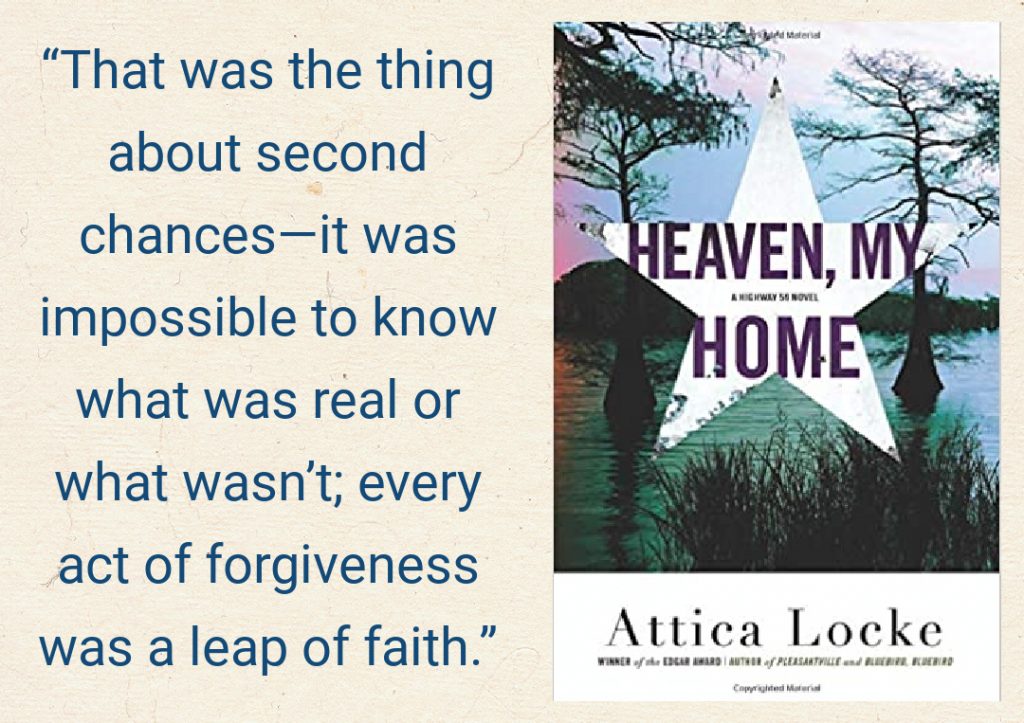
Shrinking the Integrity Gap: Between What Leaders Preach and Live, by Jeff and Terra Mattson ~ After hearing Jeff (a leadership coach) and Terra (a licensed counselor) on this podcast, I couldn’t wait to get my hands on their book, which explores the disparity between leaders’ professed values and their actual lives. We have all witnessed the downfalls of high-profile leaders who have succumbed to unethical behavior, and sadly these falls from grace seem to be happening at an alarming rate within the church. In The Integrity Gap, the Mattsens show leaders (and all of us, really) how to stop hiding behind the masks of achievement, influence, and status and “engage in the process of learning to live and lead with greater congruence and grace.” They unpack the meaning of integrity, get to the root causes of why we experience gaps between our values and behaviors (trauma, narcism, isolation, and compartmentalization to name a few), and outline strategies for achieving wholehearted leadership. Relying on personal experience with church leaders as well as observations of everyone from local church pastors to US presidents, the Mattsens provide a compassionate but truthful portrait of a devastating problem with attainable solutions.
This book is an invaluable resource for Christian leaders—especially those in high profile positions, who are most likely to suffer from the symptoms caused by gaps in integrity. I love the way the Mattsens have brought important psychological concepts and research into the faith world, blending leadership principles and human behavior insights with the truth of Scripture. In a way, their work is itself an exercise in narrowing the gap between secular and sacred aspects of leadership. Though I am not a pastor or a leader of any kind, I foiund this incredibly informative and applicable for my role as a “leader” in my own family.
My Rating: 4 Stars.
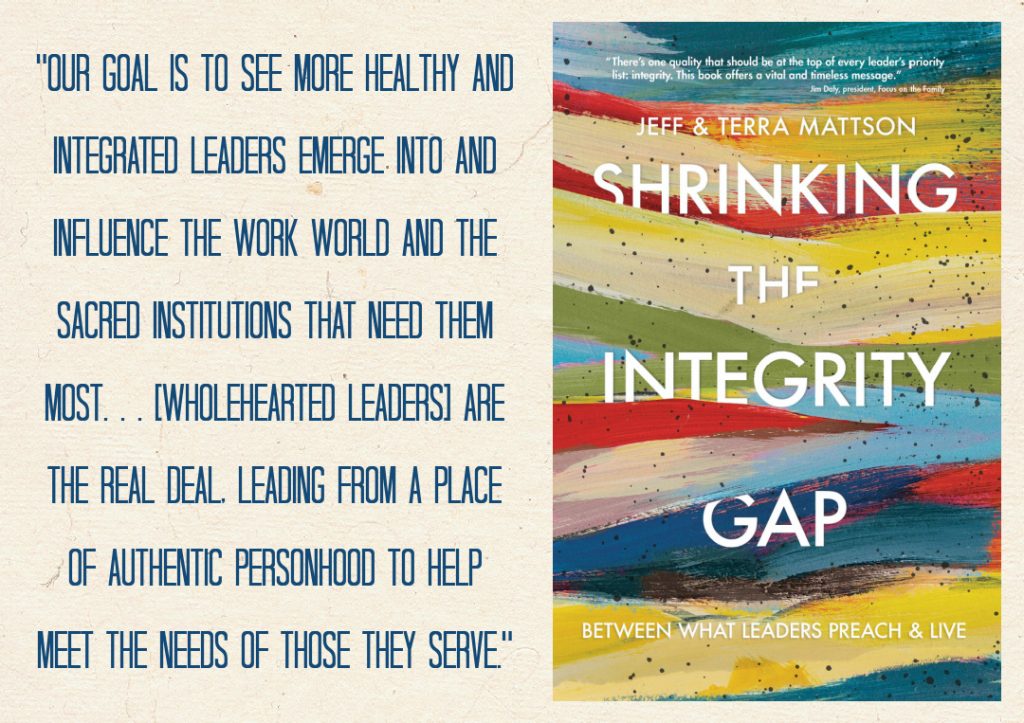
The Book of Two Ways, by Jodi Picoult ~ Dawn Edelestein has a good life with her husband Brian and their teen daughter, and she finds fulfillment and purpose in her work as a death doula, in which she helps her Boston clients make the transition from life to death. When Dawn has her own near-death experience in a plane crash that she miraculously survives, she appears to have been given a second chance and wonders whether she has made the right choices with her life.
Fifteen years earlier, Dawn was living in Egypt, working as an archaeologist alongside Wyatt Armstrong—her first love. When her plane crashes, it’s Wyatt’s name that flashes across Dawn’s mind. As the novel unfolds, we follow the two possible trajectories of Dawn’s life in stories that intertwine as she explores the ideas of second chances, divergent paths, and the intersection of love and loyalty.
There is a LOT going on in this book: Jodi Picoult has clearly done her research, and she manages to cram in everything she’s learned about Egyptology, end-of-life ethics, body image, parenting a teen, infidelity, reincarnation, superstition, and even quantum physics. I actually enjoyed the deep-dives into these subjects, though it was as lot to absorb from a single novel. My favorite of the book’s myriad themes was the examination of death and grief: I am fascinated by the concept of a death doula, and Picoult offers some beautiful (though devastatingly sad) passages relating to Dawn’s client interactions as they prepare to die. (The brief story of an infant who lived just 37 minutes completely destroyed me.) The novel draws some fascinating parallels between ancient and modern approaches to death and the afterlife, and these connections helped to unify Dawn’s past and present lives in some intriguing ways. And speaking of past/present, I really liked the alternate reality premise: it’s one I keep coming across in fiction, and never tire of reading.
With so much to appreciate in this book, I expected to like it more than I did. I had a hard time with the open-door bedroom scenes as well as many of the characters’ choices, and though she is painted as a sympathetic character, I mostly despised Dawn and her behavior throughout the book. Jodi Picoult is known for taking on controversial subject matter, and I always welcome her nuanced approach to her subject matter, but I wanted a little less moral ambiguity from this novel.
My Rating: 3.5 Stars. (Rounded down to 3 stars on Goodreads.)
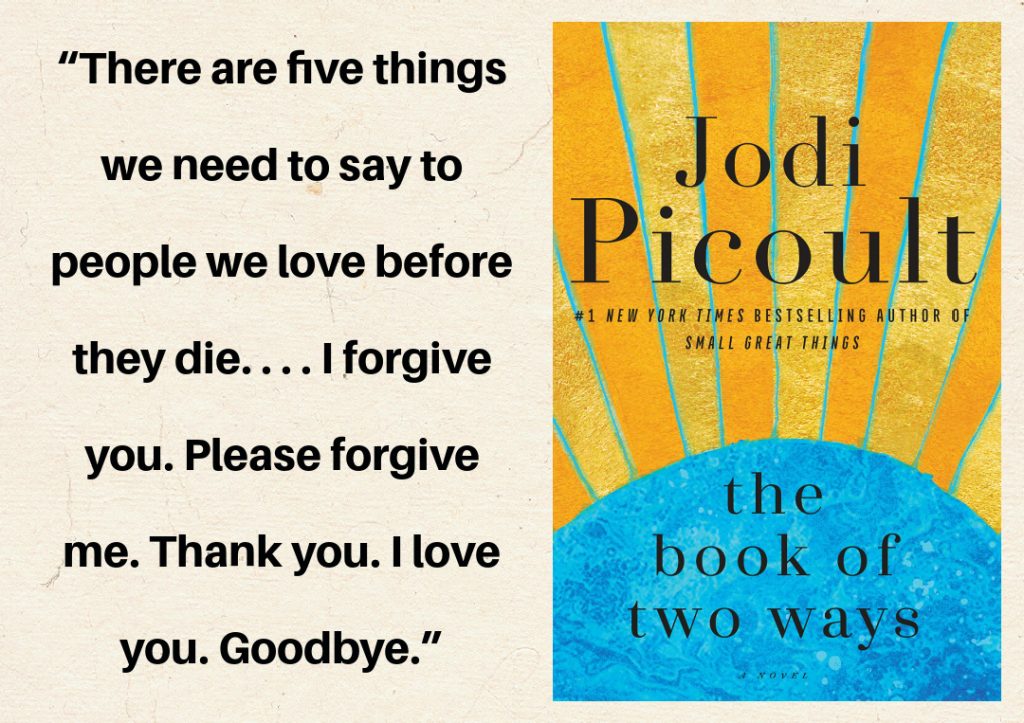
In Grandma’s Attic, by Arleta Richardson ~ Arleta Richardson grew up in the 1930s hearing all about her storyteller grandmother’s memories of her own childhood on the family’s Michigan farm. Grandma Mabel shared stories of missing buggies and awkward petticoats, of Ma’s forgetfulness and Mabel’s carelessness, of answered prayers and unanswered knocks on the door. Threaded into each story were lessons on faith, love, family, and how to find humor in every moment.
This series holds such a special place in my heart: my mom read the stories aloud to our family when I was growing up, and I have many wonderful memories of us laughing together around the dinner table as we listened in on Mable’s antics. For the most part, the book lived up to my memories. These stories are endearing and comical, providing a delightful glimpse at history while highlighting the humor and insights of everyday life on a farm. The writing style isn’t spectacular, and some of the stories’ wrap-ups and takeaways are a bit obvious, but I still really enjoyed revisiting this book, and loved the chance to introduce Charleston to Mabel, her grandmother, and that iconic attic. This series is less well known than Laura Ingalls Wilder’s Little House books, but just as wonderful.
My Rating: 4.5 Stars (Rounded up to 5 Stars on Goodreads.)
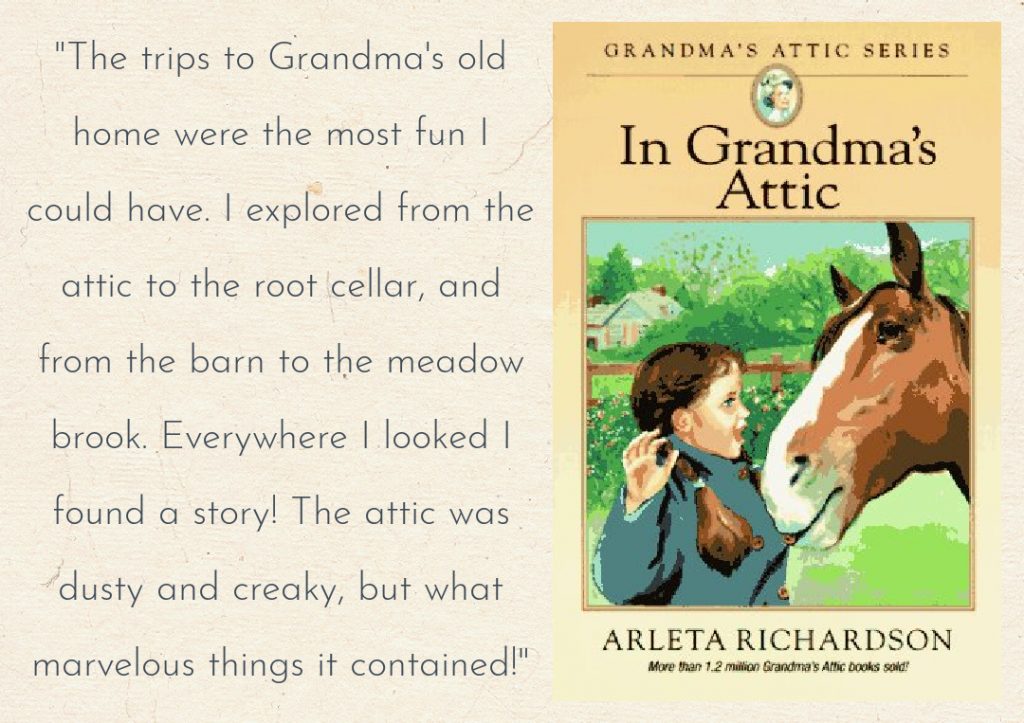
She Come By It Natural: Dolly Parton and the Women Who Lived Her Songs, by Sarah Smarsh ~ I’ve loved Dolly Parton since I was a little girl singing along to Dolly’s cassette tapes on the way to preschool, and it’s been interesting to see her growing popularity among widely diverse swaths of the population. In fact, she just might be the most-loved and least-polarizing figure in popular culture. In listening to a podcast about her life and reading a handful of books about the musician, I’ve been intrigued to see Dolly become elevated as a figurehead for everything from LGBT activists to Evangelical Christians, and in this book, journalist Sarah Smarsh depicts Dolly as a feminist icon and role model for generations of women.
In She Come By It Natural, Smarsh examines the (subtle, often inadvertent) contributions of women like Dolly Parton and Smarsh’s own grandmother to progressive feminist causes. Smarsh draws from Dolly’s lyrics, business decisions, and media interviews to depict Dolly as a powerful, driven woman who naturally embodies progressive feminist principles of equality, empowerment, and gender fluidity.
I didn’t quite know what I was getting into with this book, which I imagined would be a warm tribute to a remarkable woman. It is a tribute, but not of the variety I expected: I had not anticipated this to be such a strong propaganda piece for the feminist agenda. Smarsh draws many conclusions about Dolly and her motives that I don’t know are entirely warranted and dismisses any of Dolly’s actions that don’t align with the author’s own beliefs or opinions. I will say that I enjoyed reading about Dolly’s accomplishments and getting a behind-the-scenes look at her songwriting, and I appreciated the the commentaries on how many of her songs have become anthems for underprivileged and unrepresented women in America. However, I found this book to be more about Smarsh and her impressions of Dolly Parton (not all of which I feel are accurate) and less about the artist herself. In fact, at the end of the book, Smarsh acknowledges that people around the world project “a million ideas” onto Dolly Parton that reveal more about themselves than about Dolly. I wonder if we could all agree to admire Dolly Parton for the woman and musician that she is, without imposing our own beliefs and political agendas onto her?
My Rating: 2 Stars.
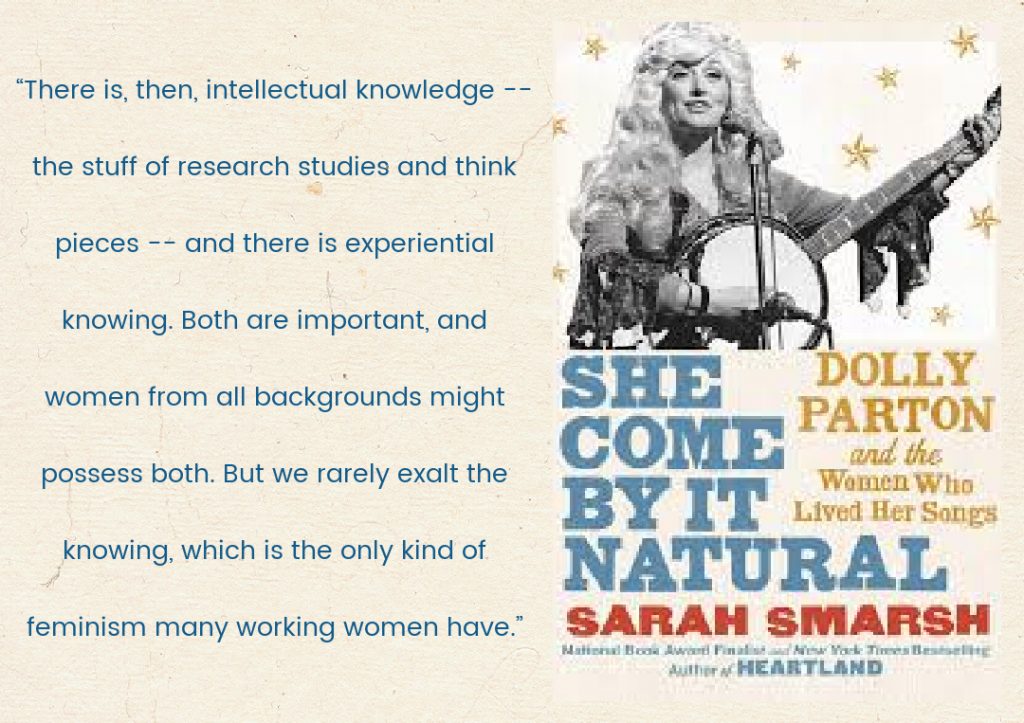
Forgiving What You Can’t Forget: Discover How to Move On, Make Peace with Painful Memories, and Create a Life That’s Beautiful Again, by Lysa TerKeurst ~ All of us who have followed Jesus for any amount of time know that we are called to forgive—not just once, but repeatedly. Even nonbelievers are able to recognize the detrimental effects of unforgiveness, which breeds bitterness and resentment and is a barrier to peace. Unfortunately, forgiving others who have harmed us is SO much easier said than done. Practically speaking, what does it look like to forgive? How do we extend peace to those who have shown no remorse? Is it possible to pursue forgiveness without the hope of reconciliation?
Lysa TerKeurst has intimate experience with the act of forgiveness. Through her journey as a Christ-follower and Biblical teacher, God has called her to forgive countless smaller grievances as well as several massive ones, from childhood abuse to her husband’s infidelity. In Forgiving What You Can’t Forget, Lysa provides a detailed recounting of her own process of moving forward with forgiveness and extends an invitation for readers to do the same. Her strategies and advice stem from her own years of intensive therapeutic work and more than a thousand hours of theological study, and they are firmly grounded in scripture while bearing the empathetic and kind-hearted encouragement of a guide who has walked—and is continuing to walk—this difficult road herself.
I’ll admit that I’m not exactly the target audience for this book. Forgiveness isn’t something I’ve struggled with, not because I’m a saint but because I’ve been fortunate to not have any huge forgiveness hurdles I’ve needed to overcome. However, I’m a huge fan of Lysa TerKeurst’s wisdom and teaching style and will read anything she writes, and I’m so glad that I gave this one a shot as it might be my favorite book of hers yet. Her writing is poetic and inviting, brimming with wisdom that applies to a broad range of life circumstances. Yes, this is an excellent guide for those seeking a tutorial in forgiveness, but it is also a powerful resource for anyone wanting to overcome past hurts in order to live a life of wholeness, peace, unity with God, and healthy relationships with others.
My favorite part of the book was the final section, in which Lysa disects numerous Scriptures related to forgiveness and models their application for present circumstances. I also appreciated Lysa’s thoughts on the more challenging aspects to forgiveness, such as the differences between forgiveness and reconciliation, how to forgive without enabling bad behavior, and what the Bible has to say about forgiving God and forgiving ourselves.
Prior to reading, I heard Lysa discuss this book on several separate podcasts, and I was inspired by her courage in sharing her struggles in a way that was transparent without slandering those who had wronged her or imparting too many gritty details of her story. This respectful balance between authenticity and gratuitous oversharing is also present within the pages of this book. I have been amazed at the ways Lysa has allowed God to redeem the difficult parts of her life in ways that glorify Him and lead others as we pursue lives of purpose and sanctification.
If you have not read Lysa’s previous book (It Shouldn’t Have to Be This Way), I would recommend reading that one first, as this book is really a continuation of the stories she shares there.
My Rating: 5 Stars!
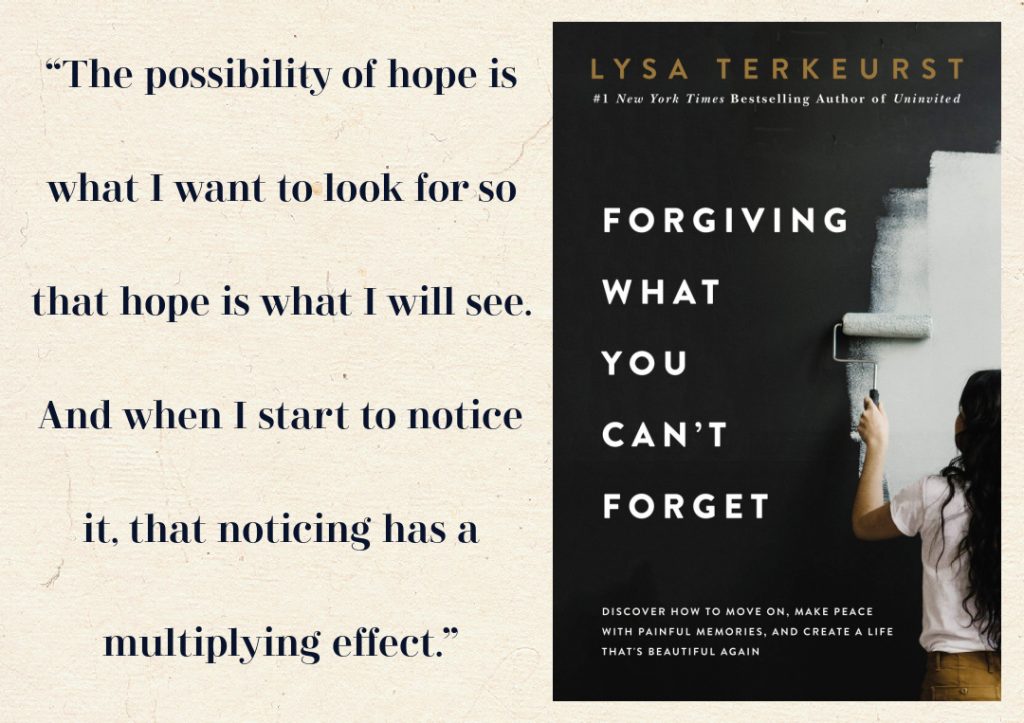
Valentine, by Elizabeth Wetmore ~ On the morning after Valentine’s Day, 1976, 14-year-old Gloría Ramirez narrowly survives a vicious attack in a desolate West Texas oil field. She staggers to the front porch of a ranch house belonging to Mary Rose Whitehead, a young mother whose life is transformed the second she witnesses the teenager’s beaten body and broken spirit. Unfortunately, Gloria’s story fails to earn the sympathy of the rest of the town, whose sense of justice has been depleted by generations of racism and misogyny.
The attack sets the stage for an engaging, gut-wrenching, and provocative exploration of violence, injustice, oppression, and—ultimately—resilience. Though Gloria’s tragedy is at the center of the novel, the story is told from the view points of several women—each memorable, nuanced, and entirely unexpected. From their unique experiences and perspectives emerges a haunting, unforgettable portrait of life and womanhood in 1970s Texas.
Westmore’s prose is astounding, with vivid imagery and a philosophical bent. I didn’t care for the direction the story takes, and struggled with the provocative feminist themes (I can’t help but wonder how much of the portrayal of this time period is accurate and how much it is tinted by modern agendas). The creative narrative style also requires some adjustment: it’s effective, but at times confusing. Nitpicking aside, I must admit that Westmore succeeded in crafting a novel that piqued my curiosity, engaged my emotions, and immersed me in a time and place I am happy to leave in the past. Triggers abound, but so does empathy, relatable human emotion, and potential for book club discussion.
My Rating: 4 Stars.
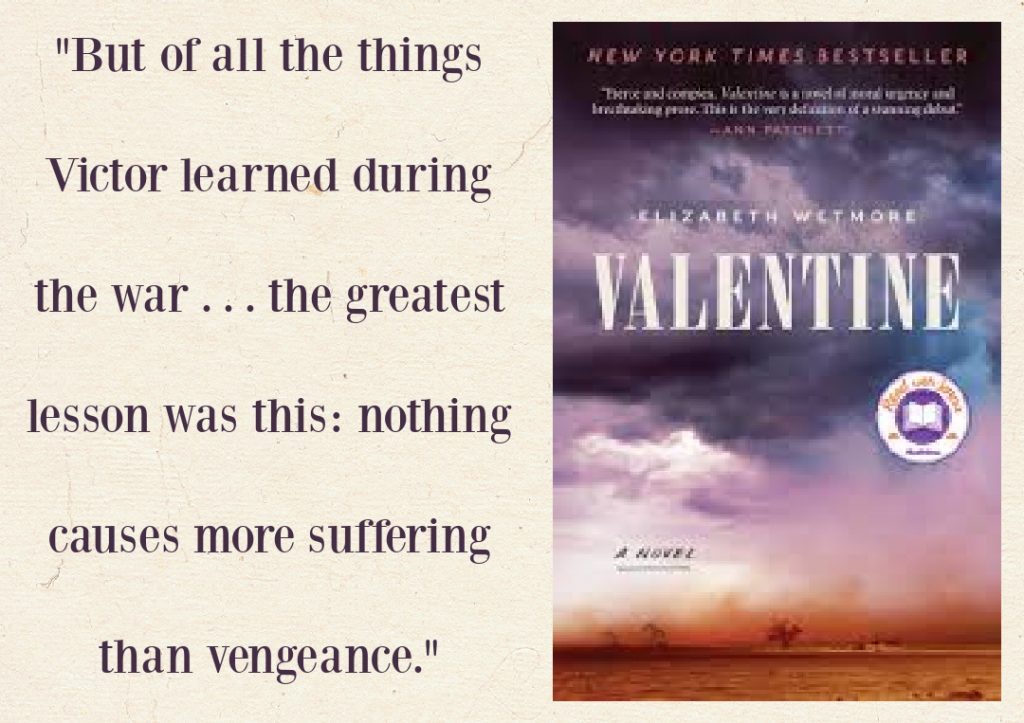
Ten Lessons for a Post-Pandemic World, by Fareed Zakaria ~ Though everything about COVID has been just terrible, I have to admit that I have been endlessly fascinated by all we have observed in the last year. Even during the earliest days of lockdown last March, when we were all scrambling for toilet paper and canned goods in preparation for what might be a challenging few weeks (oh, our naiveté), my mind was spinning with the future implications of the pandemic for myself, my family, our nation, and our world. I had a feeling there were massive changes ahead for all of us and, for better or worse, it seems I was right. As the pandemic has worn on and other events have taken center stage in the news, I’ve continued to ponder the global ramifications of all we are experiencing and have been surprised that this isn’t a greater topic of conversation (in my smaller circles or in the media). I was eager to dive into these big-picture ideas with this book from CNN host Fareed Zakaria.
Zakaria goes beyond the immediate impact of COVID to examine ten long-term lessons we can take from this experience. Some are straightforward, such as the way that the pandemic has pushed us deeper into a digital era, highlighted our need for human connection, and exacerbated inequality. Other lessons about globalization, capitalism, the shape and size of government, and the interplay between experts and lay people were a little less obvious but equally pertinent to the COVID conversation.
I found Zakaria’s key takeaways insightful and thought-provoking and appreciated the pensive approach he brings to the topics of science, medicine, and the economy. I grew frustrated, though, by the left-leaning political bias and found the writing style to be dry and weighted down by irrelevant statistics and tangents. The scope is also off: this would have worked well as an idea-whetting long-form essay or as a much longer book that explored these broad themes more thoroughly; the in-between length just felt awkward and at once bloated yet inadequate.
Of course it remains to be seen whether these ten lessons hold up in the coming years—will they be relevant once the pandemic is over? And will we heed their wisdom? Whatever the outcome, it’s interesting to think about what this book means for us now and could mean for us in the future.
My Rating: 3 Stars.
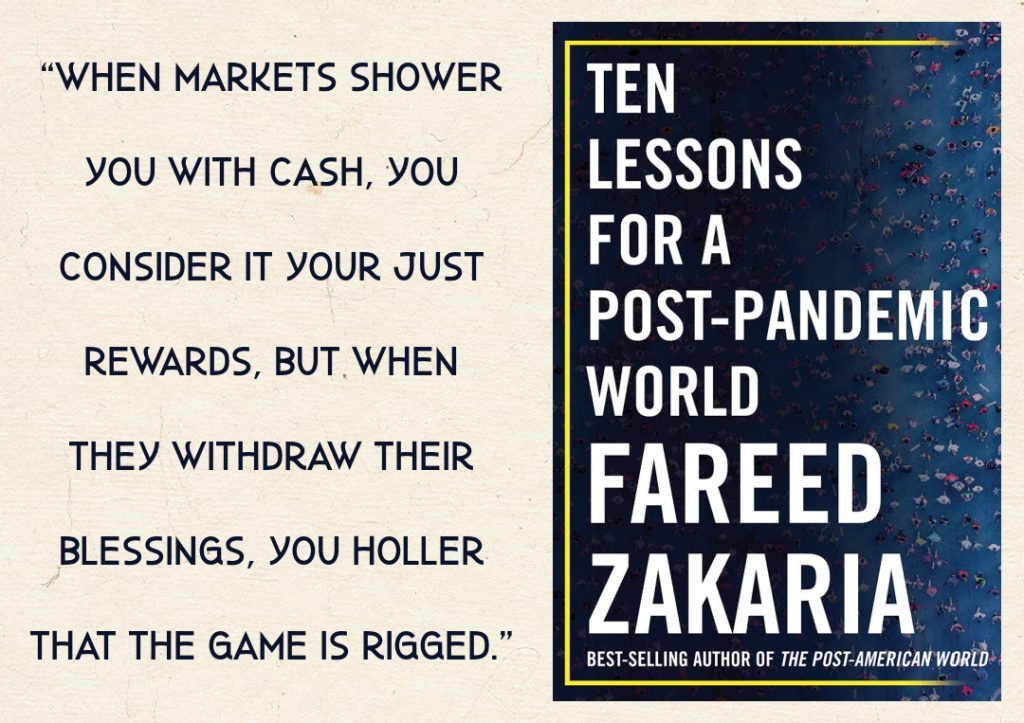
Have you read any of these books? If so, I’d love to hear your thoughts. And I’d also love to know what YOU have been reading lately!
I read that Dolly book but much preferred Dolly Parton, Songteller, which came out in the fall and is much like a casual interview between her and a journalist. The audiobook is awesome because she’s reading it and has snippets of her songs, but the ebook/physical is fun because it has photos! Thanks for the great review of The Call of the Wild and Free! I am very new to the world of homeschooling, and am particularly drawn to Charlotte Mason, so I may just be that target audience, haha!
Yes, I just listened to Songteller yesterday and loved it!
I hope you enjoy Wild and Free, I think you will definitely find it helpful and, if nothing else, very interesting.
Thanks for the heads up on the Dolly Book. I appreciate your perspective. My husband gave me the Dolly Parton Songteller book for Valentine’s Day and I love it. It’s Dolly’s stories about the songs she wrote. Lots of photos, lyrics, and stories. It’s a doorstop of a book, but I love it.
I just listened to the audio of her book yesterday! I really liked it. It worked so well on audio, I am having a hard time imagining what the hardcover would be like.
Good morning, Kendra! Just reading Beverly Cleary’s name made me smile! Lots of happy memories packed inside those many covers. I’m off to recommend to my own grandgirls!
I love that a new generation is getting to experience her words!
Wow Kendra! An amazing review post! Whew! Great wrap up!
I was disappointed in the DP book, too.